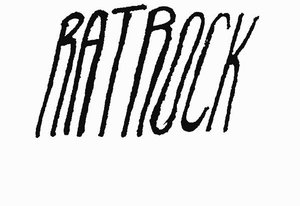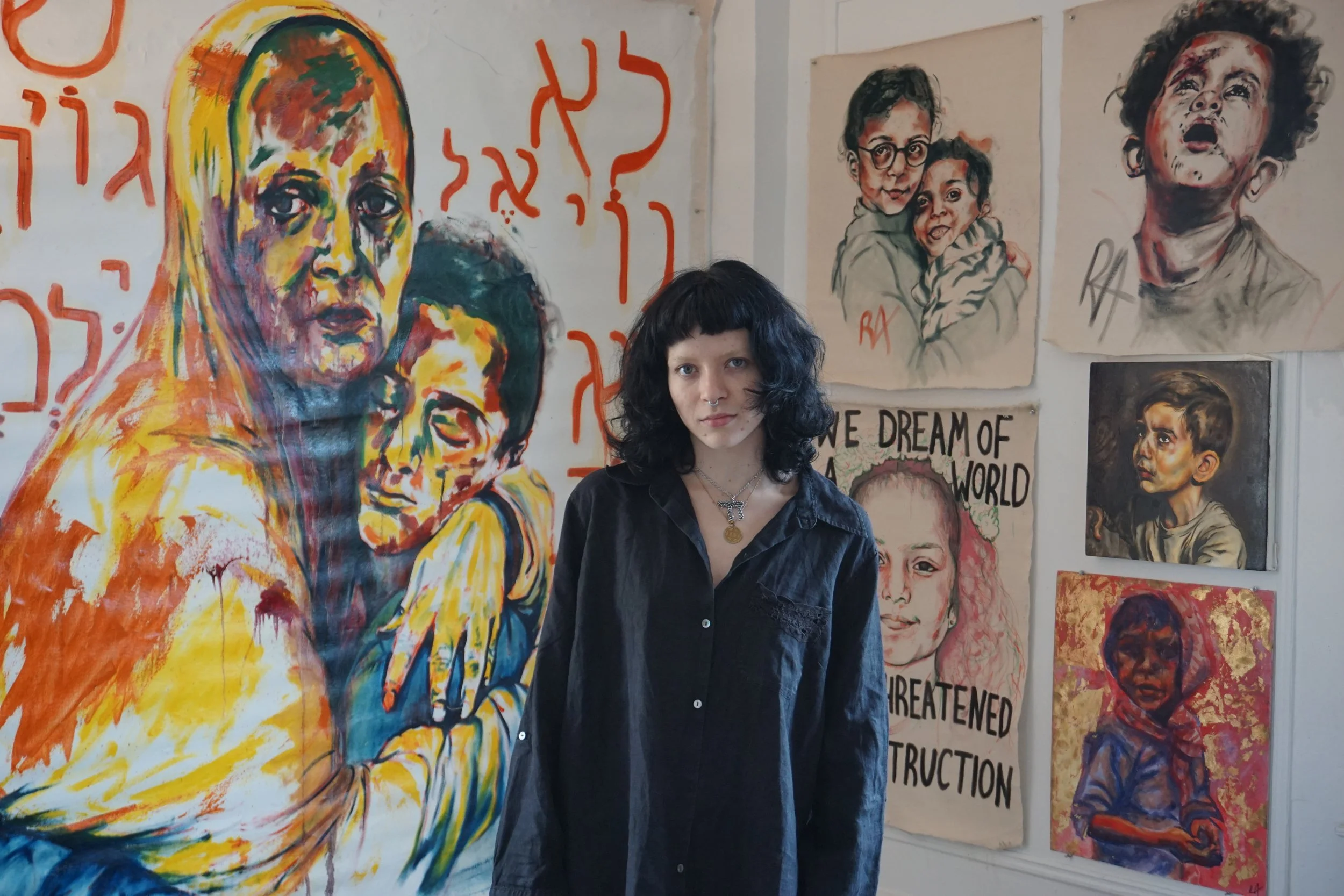Feature by Eli Schalet
Photos by Alicia Tang






(Pairs well with orange cake, mint tea in a familiar mug, and Mary Oliver’s poetry.)
Chandra Gangavarapu is a musician from the suburbs of Chicago in the class of 2025 at SEAS majoring in applied mathematics and minoring in music. Her work is in the realm of neo-soul and R&B, with personal lyricism and a warm, earthy sonic palette. “I like the stories that I tell to be very honest and very vulnerable.” Connecting with her at the onset of spring break over Zoom, we speak about her forthcoming EP, embodied artistic expression, and the necessity of naivety.
Shifting in and out of focus behind the Chandra on my computer screen appears a scene lifted straight from the soundscape of one of her songs: the deep, rich colors of vacation-vegetation saturated with sun under a great blue sky; you can’t help but relax that knot in your shoulder. She tells me about her beginnings in music about an hour outside Chicago. “I grew up learning Indian classical Carnatic singing since I was four, and I started learning violin in fourth grade after literally begging my mom for four years [she laughs]. And so, from a very young age, I think music has been a lifestyle for me.” Early on, she connected with the almost ritualistic practice of lessons, honing her skills through hard work over time.
While learning Carnatic singing she was also practicing Kuchipudi, a style of classical Indian dance that greatly informed her artistic philosophy. “Dance especially has been very interesting to me because it embodies music. Kuchipudi has both very intricate footwork and deals with a lot of complex rhythms while also keeping the upper body incredibly graceful and flowing. I think that is how I view music, and why I like to gravitate towards neo-soul. Those drums, those live instruments, the baselines, it's the grooviest shit ever. And then on top of that you have such beautiful melodies that have so much scope to them.”
This embodiment of music is also tied to her engagement with Western music theory. Chandra firmly believes that writing and performing are the grounding force for everyone involved, audience and artists. Yet she has found theory an essential tool for technical practice and, more importantly, communication with her musical collaborators. Theory becomes the language of musical partnership, the facilitator of that singular marvel when a song becomes more than just the sum of its musicians. Her songs are personal, “a way of understanding what's in my head”, but in collaboration the art becomes its own priority. It is the collaborative process that allows her to let go. “I think it’s the only way you get better at your craft, right? You’ve got to learn, you’ve got to unlearn, learn and unlearn, etc. That's the constant cycle.” The theory allows her to abstract the music from being strictly self-directed. “But at the end of the day, if it doesn't feel right and sound right in your head or as you're playing it, what's the point?”
This feeling is the main motivator of her compositional style, which starts with something solid like a bassline or chord progression, sometimes a rhythmic pattern. Then, Chandra uses her voice to outline melodies and harmonies which are later assigned to various instruments or set to lyrics. As opposed to an instrument like the piano which is limited to discrete tones, she likes the freedom that the voice provides as a continuous instrument, unlimited in this respect. By keeping the entire process in her voice, it becomes about more than just creation. “The voice is also an embodiment of music. After singing for a long time, after a long practice session, your mood feels better. And when you're really singing with your chest, you're feeling like that air coming out of you, in a way it is meditative, and so healing, you know?” It is no shock that Chandra’s music obtains this near-devotional quality. While she wouldn’t describe herself as distinctly religious (“I’m very spiritual. It's more about calmness and musical devotion. Those are what I want to bring out in my music more because that has given me the most calm and the most solace.”), the traditions of Carnatic music and Kuchipudi dance she grew up learning have a long history with devotional and meditative practice. But what she describes also brings to mind the phenomenon of entrainment, or the synchronization of biological rhythms such as breath and heart rate in people exposed to the same music, both in performance and in the audience. It’s not just a good emotional feeling that Chandra is describing; she’s conducting a symphony of rhythms inherent to the human body, brought into harmony with herself through her art.
When she has an initial demo, recorded with her home equipment, Chandra will see how other people connect with it. She’ll send it to collaborators and friends, refining the instrumentation, and working with producers to record a final version. “That collaborative process is so fun to me. When we were working on producing ‘The Sun’, it took all summer just because I was trying to learn how to say what I wanted to hear, and that was just really fun. My producer for ‘The Sun’ was Jacob Pappas; he's out in LA and I would hear all of his drafts and I was so impressed by everything he was doing, it would be really great calls where I felt like I could just say anything that I wanted to hear, and then he would have it down so perfectly.”
Something that has been playing on her mind lately is finding a balance between a more live sound and a more produced one. She describes this part of her process as the careful construction of a sonic world. “It comes down to listening to a lot and building up a nice reference list, picking out specific things you like in different songs. Then, once you have that ‘world’, then you fine-tune it to something that sounds good.” The difficulty of choosing where to take her sound stems from a reverence for her collaborators and a desire to capture her live experience with them in a static medium. Sometimes what needs to be captured is the ambience of a room or the feeling hanging somewhere between those four walls. How do you record a feeling? “Live takes capture so much more emotion than you ever could with having something that's so produced. In a way, you're trying to capture the ephemerality of one take, which some people have qualms about, but I think it's beautiful. But with a more produced track you can work with more nuance, you can be much more detailed. You can have everything you want, the way you want it. Both of them are really fun, and ‘The Sun’ is fully produced. But the recording process is definitely way more fun when you're doing a live take.” As is always the case, technology is a double-edged sword.
It’s at this crossroads that Chandra sees her academic work in applied math and music come together. People often assume because music can be so mathematical that the work would have many similarities, but most of her applied math work is engineering-focused. The persistent search for authenticity in music, she says, can be pretty analogous to the trial and error of solving any tough problem. “But as I was going through college, I've realized there's definitely a lot more overlap in the synthesized world. And so I actually did have a lot of fun exploring all of that, from a more technical aspect doing a lot more machine learning music and thinking about sound in a more abstract way.” Columbia’s Computer Music Center in Prentis Hall on 125th Street has been a huge outlet for this exploration. “In Composition I wrote this piece. It was very improvisatory; it was supposed to be a reflection of chance versus choice, which [in regards to applied math] was leaning towards probability. In those ways there are fun things you can be doing between those two worlds.”
This search for authenticity is front and center in the EP Chandra has been working on for the past couple of years, as is a sense of trust, especially when it comes to the self. “There’s a lot of thinking about the theme of trusting where I am, and with that comes a lot of grappling with naivety.” This too is in dialogue with the devotional aspect to her music. That cultivation of inner peace is what many people search for through religious journeys, that sort of self-comfort. By carving out a space for herself to do the same sort of work via her music, Chandra in turn provides the same for her audience who is seeking the same comfort in a way that is less explicitly religious.
These themes are especially present on a song from this new project currently titled “Second Time Around”, which has been in the works for almost a year now. The chord progression is one she’s been playing with for a very long time and even made its way into her composition class last semester. “It has a lifetime that extends outside of the song, which I think gives more feeling to it. But it’s a song where I fully leaned into my naivety. I was like ‘Yeah, I fully believe things are going to be this way and I am so happy with that.’ I think it's so easy to be down on yourself for feeling naive, and it was nice to just bask in such silly feelings. The goal is to feel completely aligned with where you are, but sometimes you’ve just got to convince yourself you're there.” We laugh about it because it feels especially true now, witnessing the nonchalant apocalypse that seems to have struck our peers. In the face of immense social pressure to appear as cool as possible and care as little as possible, there's something strikingly brave about investing in your naivety at least for a moment. “Nonchalance is out in my books.” I couldn’t agree more.
Part of what makes this possible in her art is achieving a certain distance from the musical subject. When working with old material, like with “Second Time Around”, Chandra tells me, part of it is an excitement around making space for new creativity. “Somehow, though, it's really fun escaping to that feeling again, feeling exactly like you did way back when and laughing about it. That's how I feel about performing ‘Over the Phone’ or ‘Dull Pink’ these days. I'm like, ‘Wow, girl…’ But sometimes, yeah, things do take on a new life. I wrote ‘The Sun’ about a completely different situation and now there's still so many situations that make me feel exactly how I did back then, and it's still me.”
There’s a certain freedom that comes from letting go of the idea that your art has to appeal to everyone, or be made with every potential listener in mind. It takes practice and intention to obtain, and maybe it’s impossible to hold on to constantly, but striving for it should be the goal. There's something to be said about having a body of work that is specifically you, so when it resonates with people it holds more significance; it means they're resonating with a specific vision that matters to you, and is incredibly personal. Chandra’s upcoming EP is just that: incredibly her. “I was gonna say there's something for everyone. There's not, you know, there's not. I hope people find something new and something warm in the project.”
The EP is set for release in late June. You can enjoy “Liquid in My Feet” and her other singles until then under Chandra on all streaming platforms, and find her on Instragram @chandralekhaxx.





























